Page 25 of 157
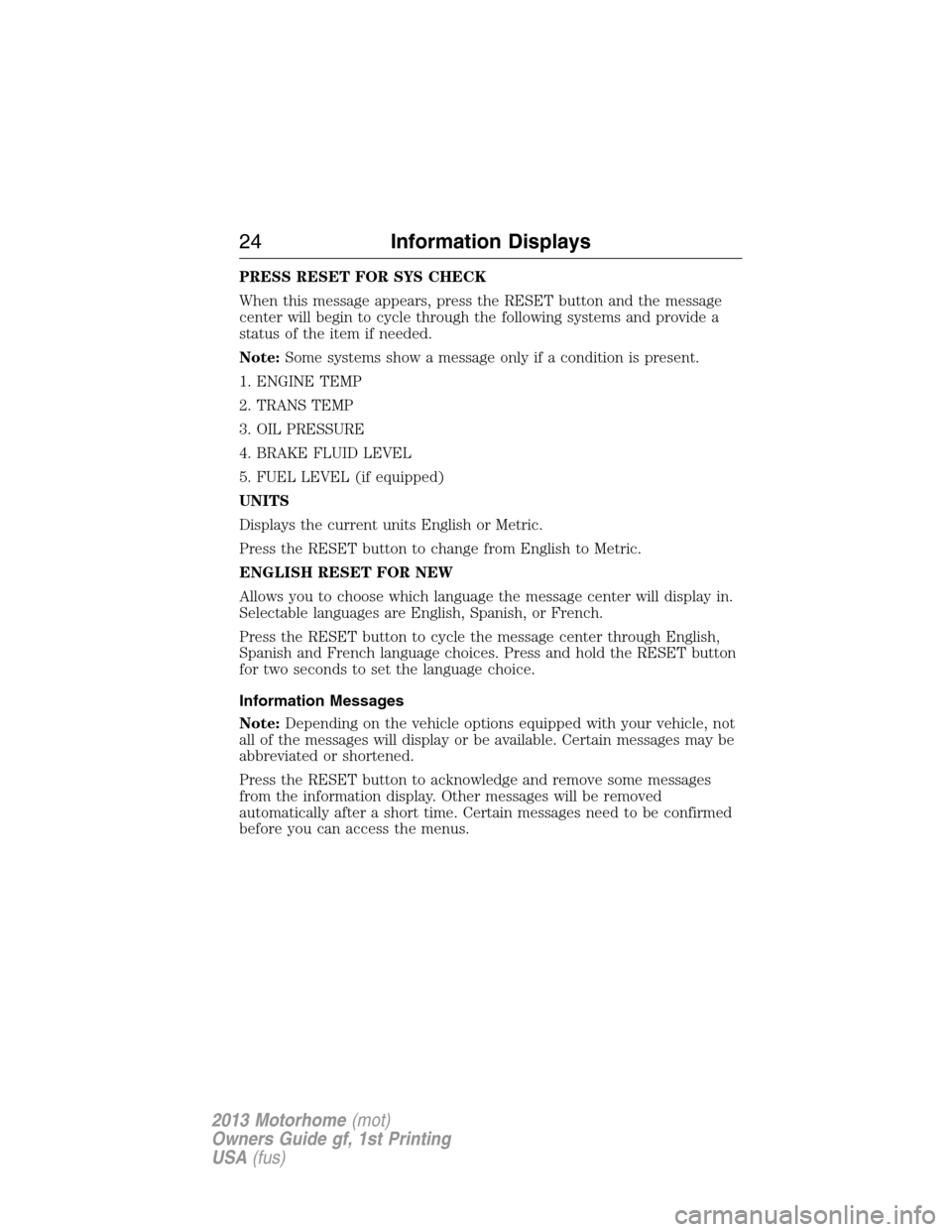
PRESS RESET FOR SYS CHECK
When this message appears, press the RESET button and the message
center will begin to cycle through the following systems and provide a
status of the item if needed.
Note:Some systems show a message only if a condition is present.
1. ENGINE TEMP
2. TRANS TEMP
3. OIL PRESSURE
4. BRAKE FLUID LEVEL
5. FUEL LEVEL (if equipped)
UNITS
Displays the current units English or Metric.
Press the RESET button to change from English to Metric.
ENGLISH RESET FOR NEW
Allows you to choose which language the message center will display in.
Selectable languages are English, Spanish, or French.
Press the RESET button to cycle the message center through English,
Spanish and French language choices. Press and hold the RESET button
for two seconds to set the language choice.
Information Messages
Note:Depending on the vehicle options equipped with your vehicle, not
all of the messages will display or be available. Certain messages may be
abbreviated or shortened.
Press the RESET button to acknowledge and remove some messages
from the information display. Other messages will be removed
automatically after a short time. Certain messages need to be confirmed
before you can access the menus.
24Information Displays
2013 Motorhome(mot)
Owners Guide gf, 1st Printing
USA(fus)
Page 26 of 157
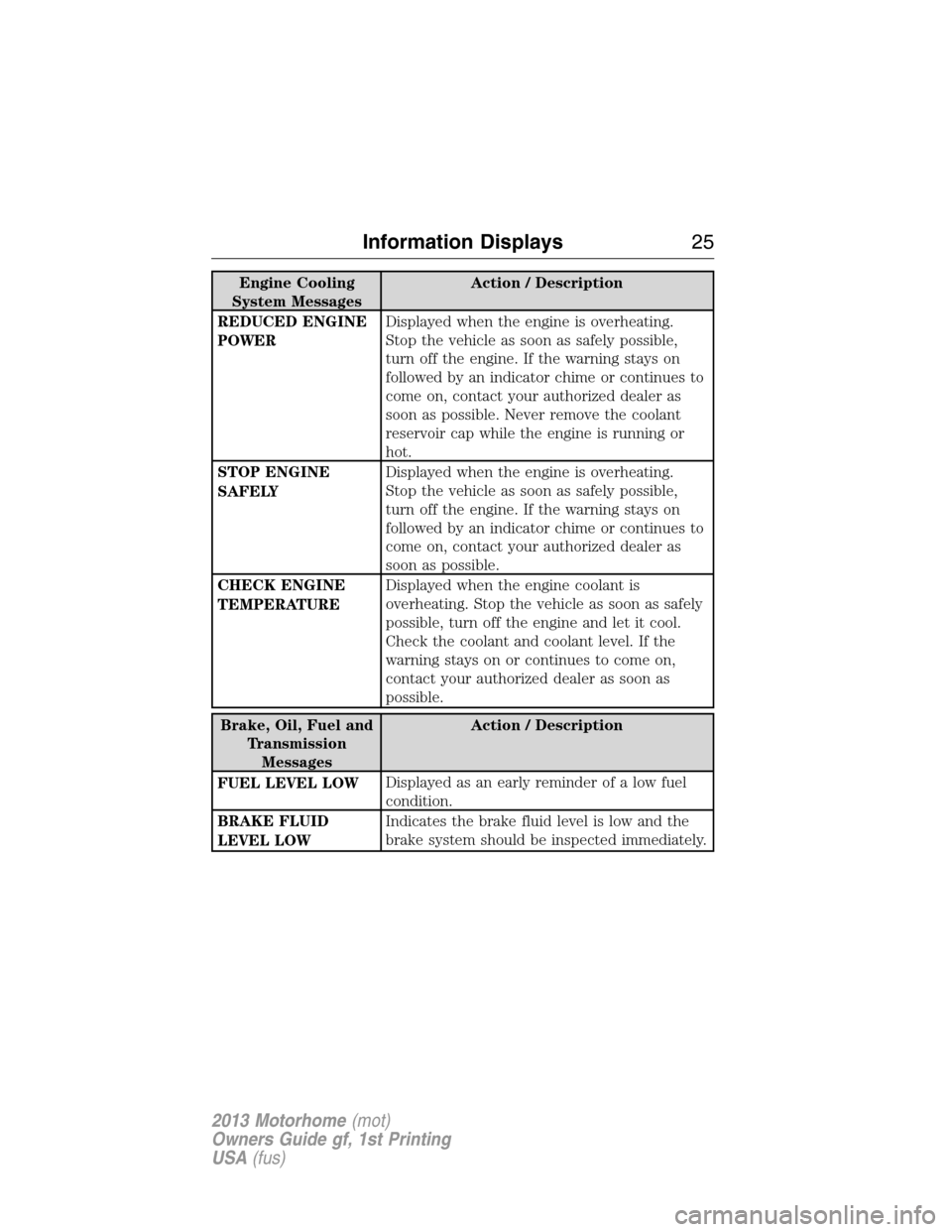
Engine Cooling
System MessagesAction / Description
REDUCED ENGINE
POWERDisplayed when the engine is overheating.
Stop the vehicle as soon as safely possible,
turn off the engine. If the warning stays on
followed by an indicator chime or continues to
come on, contact your authorized dealer as
soon as possible. Never remove the coolant
reservoir cap while the engine is running or
hot.
STOP ENGINE
SAFELYDisplayed when the engine is overheating.
Stop the vehicle as soon as safely possible,
turn off the engine. If the warning stays on
followed by an indicator chime or continues to
come on, contact your authorized dealer as
soon as possible.
CHECK ENGINE
TEMPERATUREDisplayed when the engine coolant is
overheating. Stop the vehicle as soon as safely
possible, turn off the engine and let it cool.
Check the coolant and coolant level. If the
warning stays on or continues to come on,
contact your authorized dealer as soon as
possible.
Brake, Oil, Fuel and
Transmission
MessagesAction / Description
FUEL LEVEL LOWDisplayed as an early reminder of a low fuel
condition.
BRAKE FLUID
LEVEL LOWIndicates the brake fluid level is low and the
brake system should be inspected immediately.
Information Displays25
2013 Motorhome(mot)
Owners Guide gf, 1st Printing
USA(fus)
Page 27 of 157
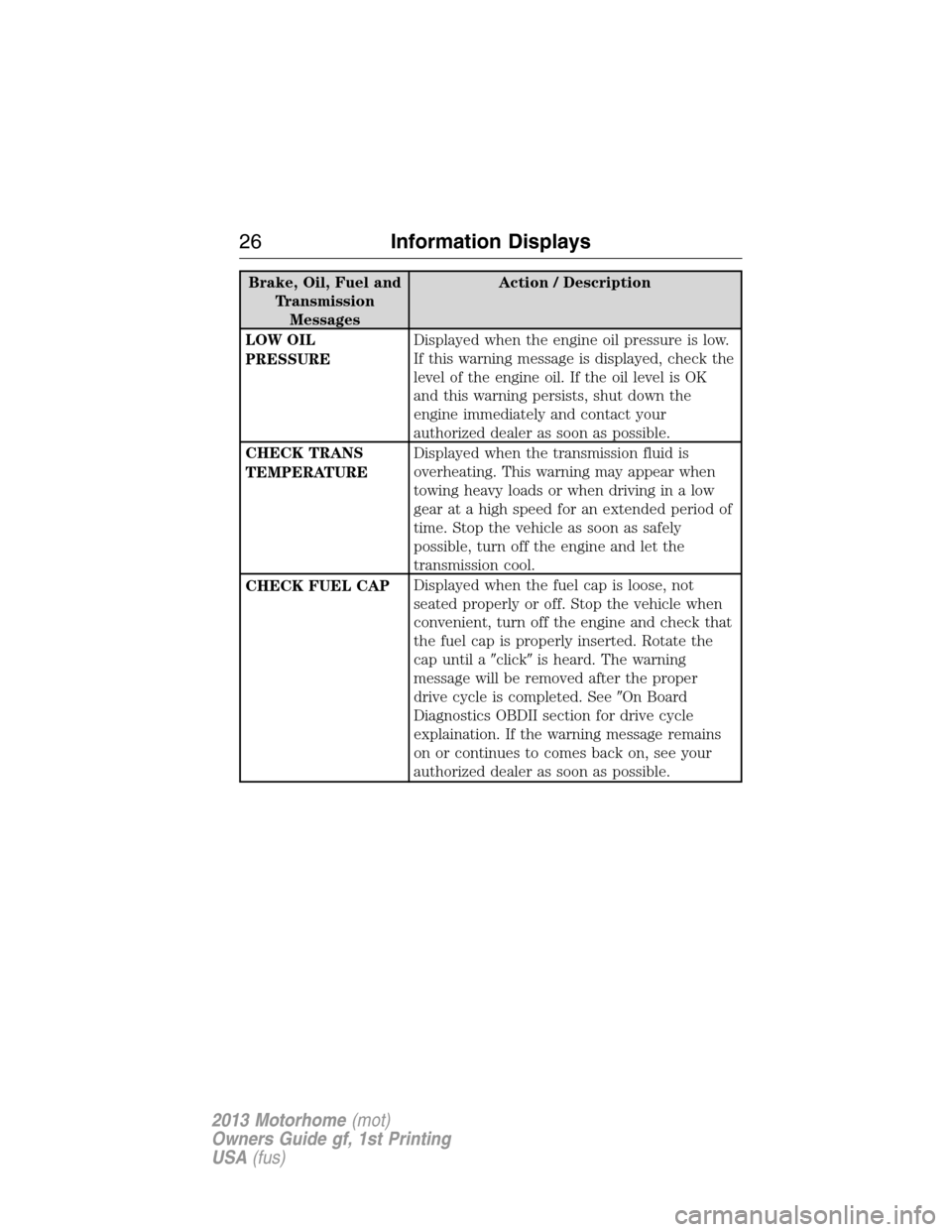
Brake, Oil, Fuel and
Transmission
MessagesAction / Description
LOW OIL
PRESSUREDisplayed when the engine oil pressure is low.
If this warning message is displayed, check the
level of the engine oil. If the oil level is OK
and this warning persists, shut down the
engine immediately and contact your
authorized dealer as soon as possible.
CHECK TRANS
TEMPERATUREDisplayed when the transmission fluid is
overheating. This warning may appear when
towing heavy loads or when driving in a low
gear at a high speed for an extended period of
time. Stop the vehicle as soon as safely
possible, turn off the engine and let the
transmission cool.
CHECK FUEL CAPDisplayed when the fuel cap is loose, not
seated properly or off. Stop the vehicle when
convenient, turn off the engine and check that
the fuel cap is properly inserted. Rotate the
cap until a�click�is heard. The warning
message will be removed after the proper
drive cycle is completed. See�On Board
Diagnostics OBDII section for drive cycle
explaination. If the warning message remains
on or continues to comes back on, see your
authorized dealer as soon as possible.
26Information Displays
2013 Motorhome(mot)
Owners Guide gf, 1st Printing
USA(fus)
Page 28 of 157
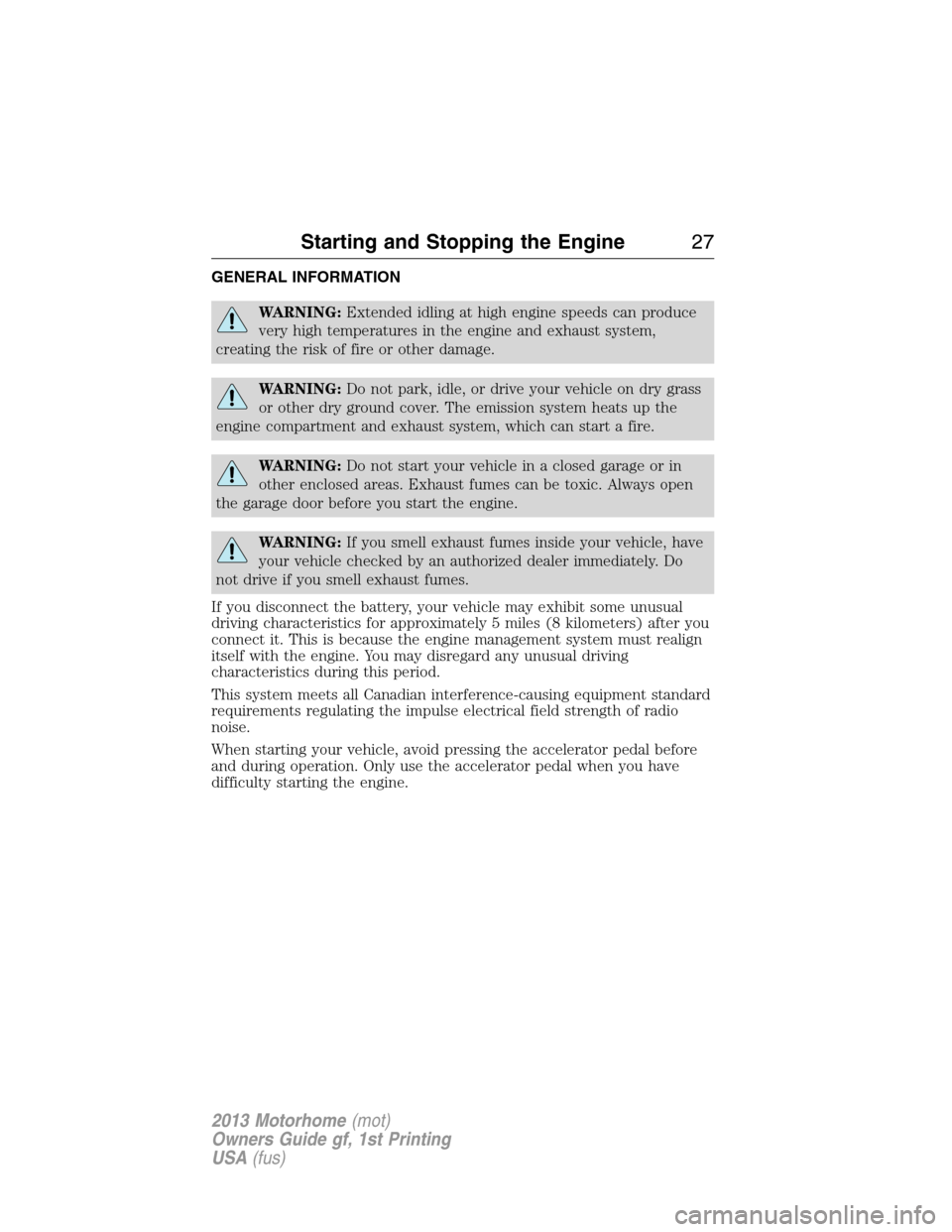
GENERAL INFORMATION
WARNING:Extended idling at high engine speeds can produce
very high temperatures in the engine and exhaust system,
creating the risk of fire or other damage.
WARNING:Do not park, idle, or drive your vehicle on dry grass
or other dry ground cover. The emission system heats up the
engine compartment and exhaust system, which can start a fire.
WARNING:Do not start your vehicle in a closed garage or in
other enclosed areas. Exhaust fumes can be toxic. Always open
the garage door before you start the engine.
WARNING:If you smell exhaust fumes inside your vehicle, have
your vehicle checked by an authorized dealer immediately. Do
not drive if you smell exhaust fumes.
If you disconnect the battery, your vehicle may exhibit some unusual
driving characteristics for approximately 5 miles (8 kilometers) after you
connect it. This is because the engine management system must realign
itself with the engine. You may disregard any unusual driving
characteristics during this period.
This system meets all Canadian interference-causing equipment standard
requirements regulating the impulse electrical field strength of radio
noise.
When starting your vehicle, avoid pressing the accelerator pedal before
and during operation. Only use the accelerator pedal when you have
difficulty starting the engine.
Starting and Stopping the Engine27
2013 Motorhome(mot)
Owners Guide gf, 1st Printing
USA(fus)
Page 29 of 157
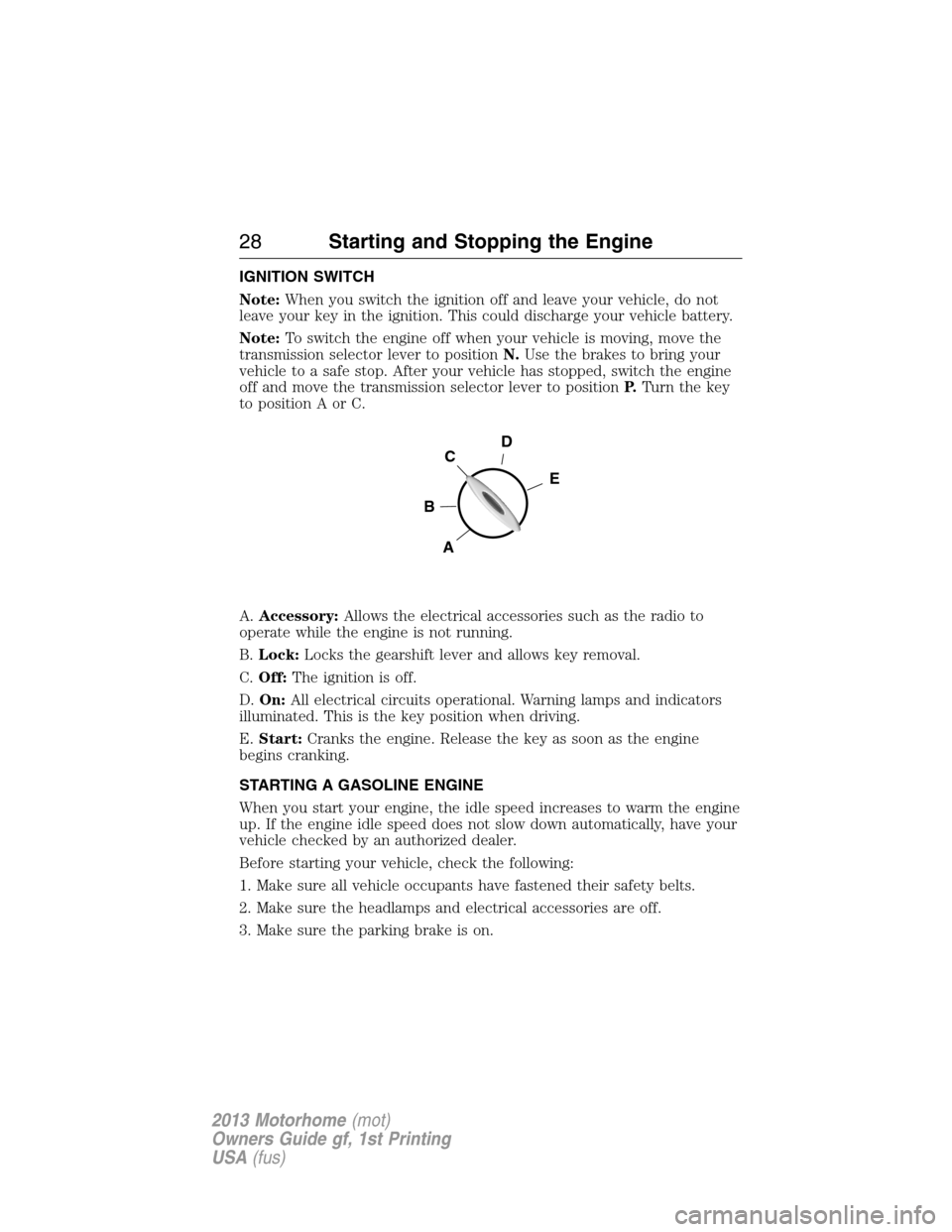
IGNITION SWITCH
Note:When you switch the ignition off and leave your vehicle, do not
leave your key in the ignition. This could discharge your vehicle battery.
Note:To switch the engine off when your vehicle is moving, move the
transmission selector lever to positionN.Use the brakes to bring your
vehicle to a safe stop. After your vehicle has stopped, switch the engine
off and move the transmission selector lever to positionP.Turn the key
to position A or C.
A.Accessory:Allows the electrical accessories such as the radio to
operate while the engine is not running.
B.Lock:Locks the gearshift lever and allows key removal.
C.Off:The ignition is off.
D.On:All electrical circuits operational. Warning lamps and indicators
illuminated. This is the key position when driving.
E.Start:Cranks the engine. Release the key as soon as the engine
begins cranking.
STARTING A GASOLINE ENGINE
When you start your engine, the idle speed increases to warm the engine
up. If the engine idle speed does not slow down automatically, have your
vehicle checked by an authorized dealer.
Before starting your vehicle, check the following:
1. Make sure all vehicle occupants have fastened their safety belts.
2. Make sure the headlamps and electrical accessories are off.
3. Make sure the parking brake is on.
D
E
C
B
A
28Starting and Stopping the Engine
2013 Motorhome(mot)
Owners Guide gf, 1st Printing
USA(fus)
Page 30 of 157
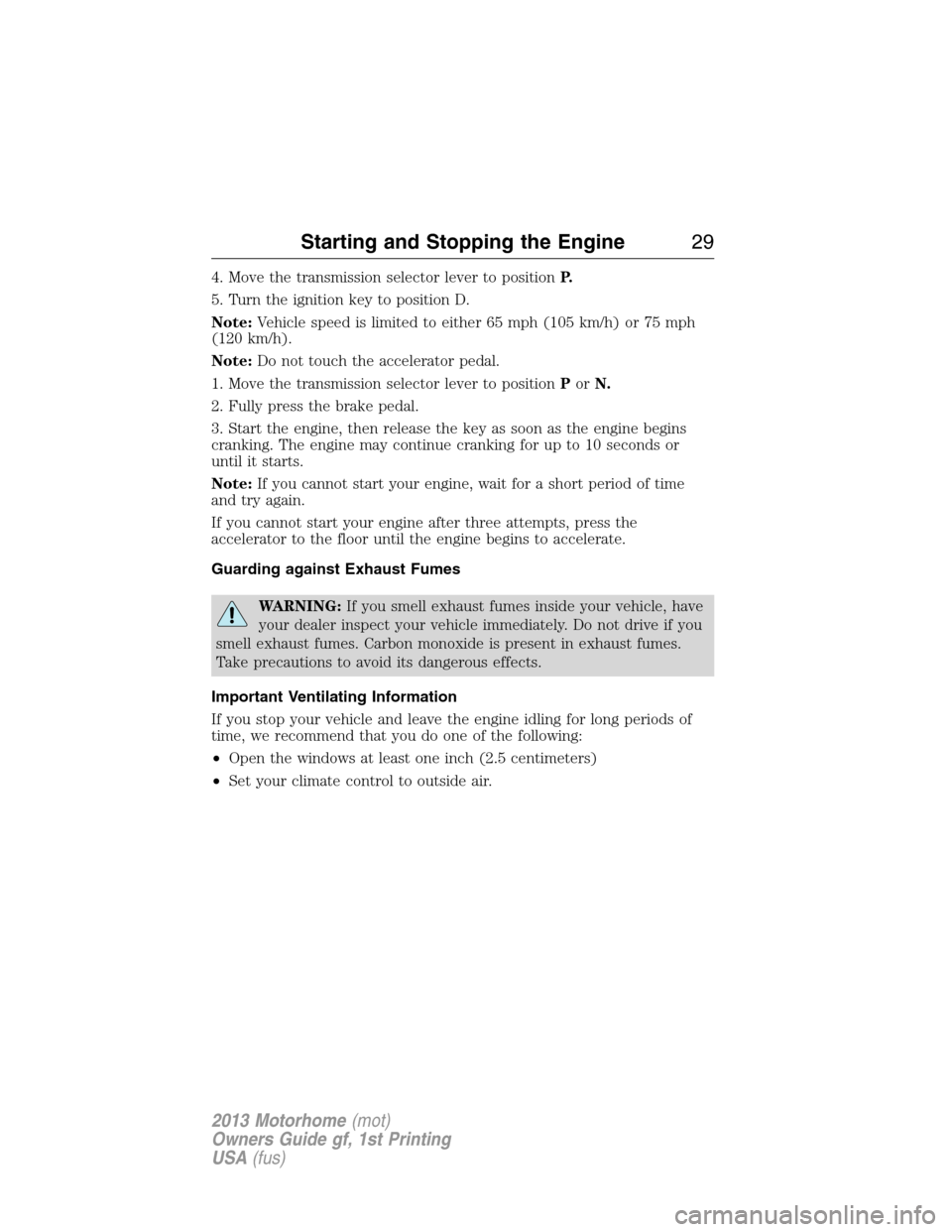
4. Move the transmission selector lever to positionP.
5. Turn the ignition key to position D.
Note:Vehicle speed is limited to either 65 mph (105 km/h) or 75 mph
(120 km/h).
Note:Do not touch the accelerator pedal.
1. Move the transmission selector lever to positionPorN.
2. Fully press the brake pedal.
3. Start the engine, then release the key as soon as the engine begins
cranking. The engine may continue cranking for up to 10 seconds or
until it starts.
Note:If you cannot start your engine, wait for a short period of time
and try again.
If you cannot start your engine after three attempts, press the
accelerator to the floor until the engine begins to accelerate.
Guarding against Exhaust Fumes
WARNING:If you smell exhaust fumes inside your vehicle, have
your dealer inspect your vehicle immediately. Do not drive if you
smell exhaust fumes. Carbon monoxide is present in exhaust fumes.
Take precautions to avoid its dangerous effects.
Important Ventilating Information
If you stop your vehicle and leave the engine idling for long periods of
time, we recommend that you do one of the following:
•Open the windows at least one inch (2.5 centimeters)
•Set your climate control to outside air.
Starting and Stopping the Engine29
2013 Motorhome(mot)
Owners Guide gf, 1st Printing
USA(fus)
Page 31 of 157
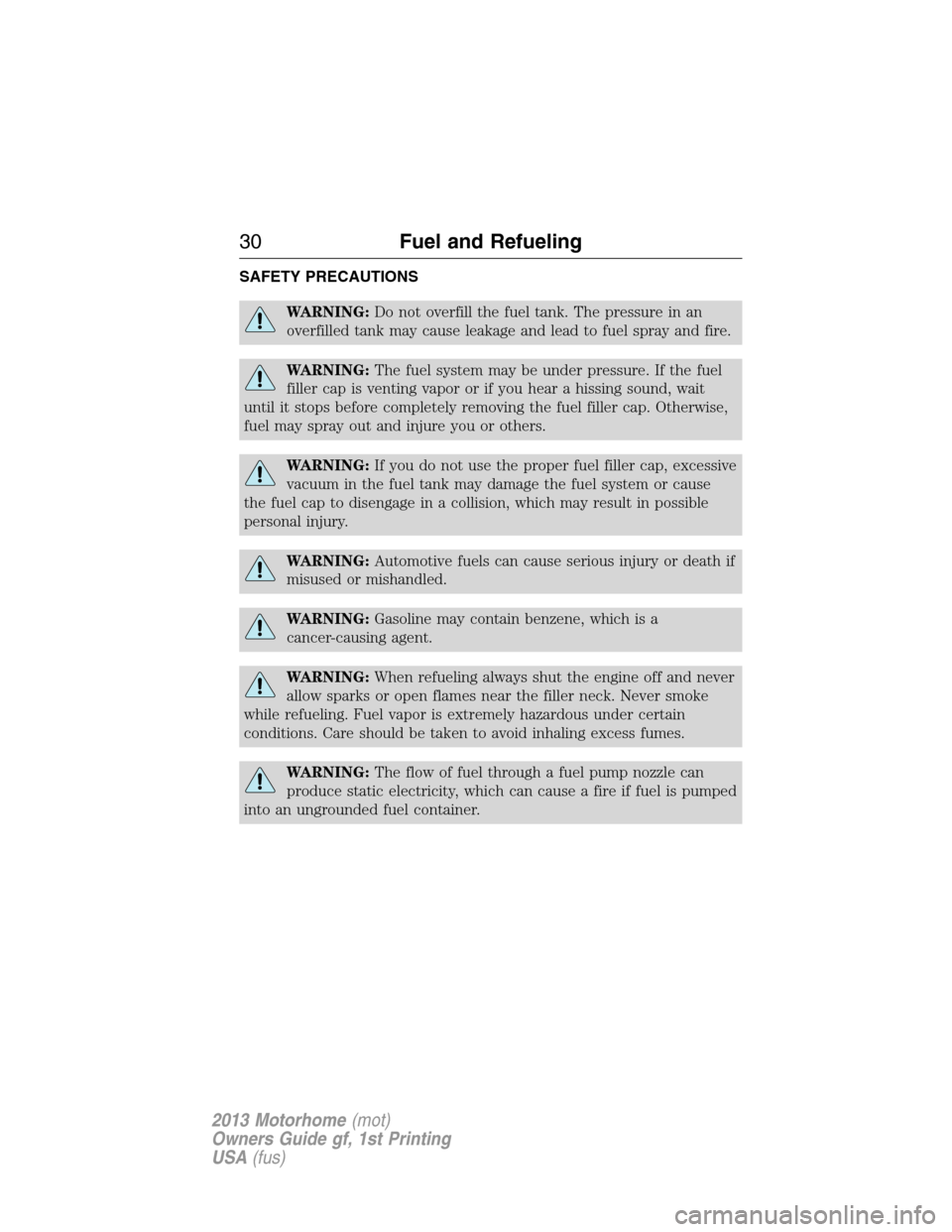
SAFETY PRECAUTIONS
WARNING:Do not overfill the fuel tank. The pressure in an
overfilled tank may cause leakage and lead to fuel spray and fire.
WARNING:The fuel system may be under pressure. If the fuel
filler cap is venting vapor or if you hear a hissing sound, wait
until it stops before completely removing the fuel filler cap. Otherwise,
fuel may spray out and injure you or others.
WARNING:If you do not use the proper fuel filler cap, excessive
vacuum in the fuel tank may damage the fuel system or cause
the fuel cap to disengage in a collision, which may result in possible
personal injury.
WARNING:Automotive fuels can cause serious injury or death if
misused or mishandled.
WARNING:Gasoline may contain benzene, which is a
cancer-causing agent.
WARNING:When refueling always shut the engine off and never
allow sparks or open flames near the filler neck. Never smoke
while refueling. Fuel vapor is extremely hazardous under certain
conditions. Care should be taken to avoid inhaling excess fumes.
WARNING:The flow of fuel through a fuel pump nozzle can
produce static electricity, which can cause a fire if fuel is pumped
into an ungrounded fuel container.
30Fuel and Refueling
2013 Motorhome(mot)
Owners Guide gf, 1st Printing
USA(fus)
Page 32 of 157
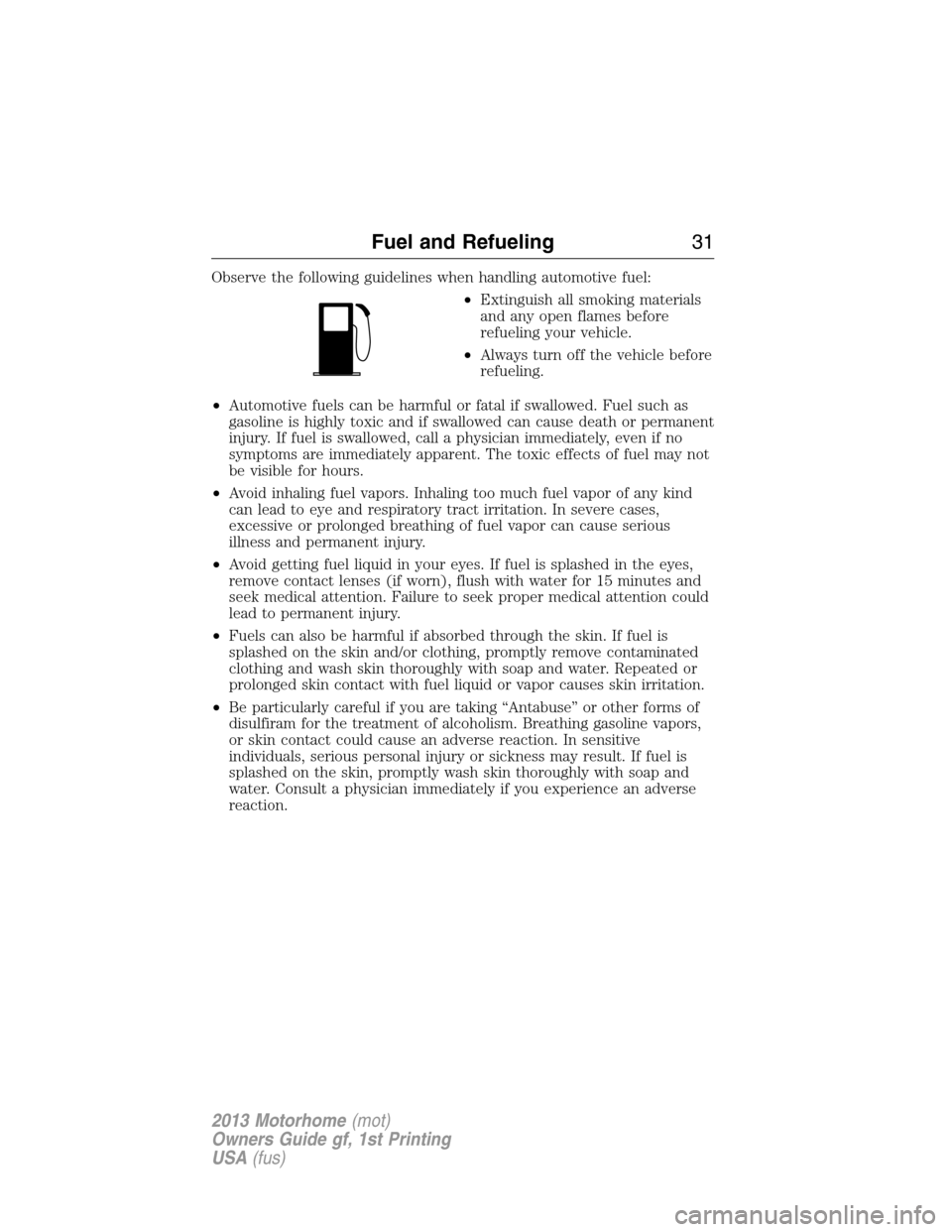
Observe the following guidelines when handling automotive fuel:
•Extinguish all smoking materials
and any open flames before
refueling your vehicle.
•Always turn off the vehicle before
refueling.
•Automotive fuels can be harmful or fatal if swallowed. Fuel such as
gasoline is highly toxic and if swallowed can cause death or permanent
injury. If fuel is swallowed, call a physician immediately, even if no
symptoms are immediately apparent. The toxic effects of fuel may not
be visible for hours.
•Avoid inhaling fuel vapors. Inhaling too much fuel vapor of any kind
can lead to eye and respiratory tract irritation. In severe cases,
excessive or prolonged breathing of fuel vapor can cause serious
illness and permanent injury.
•Avoid getting fuel liquid in your eyes. If fuel is splashed in the eyes,
remove contact lenses (if worn), flush with water for 15 minutes and
seek medical attention. Failure to seek proper medical attention could
lead to permanent injury.
•Fuels can also be harmful if absorbed through the skin. If fuel is
splashed on the skin and/or clothing, promptly remove contaminated
clothing and wash skin thoroughly with soap and water. Repeated or
prolonged skin contact with fuel liquid or vapor causes skin irritation.
•Be particularly careful if you are taking “Antabuse” or other forms of
disulfiram for the treatment of alcoholism. Breathing gasoline vapors,
or skin contact could cause an adverse reaction. In sensitive
individuals, serious personal injury or sickness may result. If fuel is
splashed on the skin, promptly wash skin thoroughly with soap and
water. Consult a physician immediately if you experience an adverse
reaction.
Fuel and Refueling31
2013 Motorhome(mot)
Owners Guide gf, 1st Printing
USA(fus)
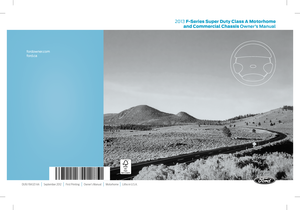 1
1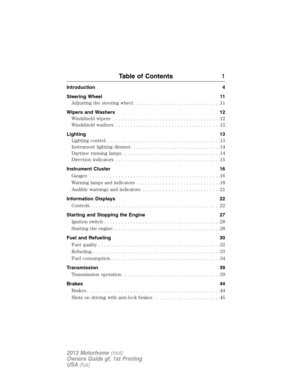 2
2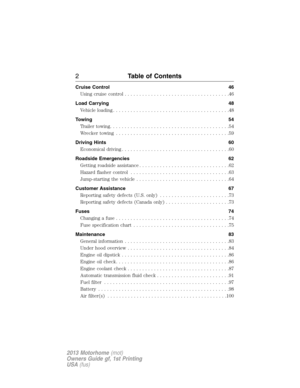 3
3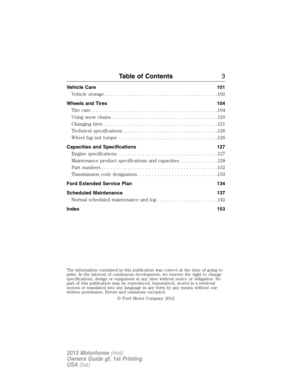 4
4 5
5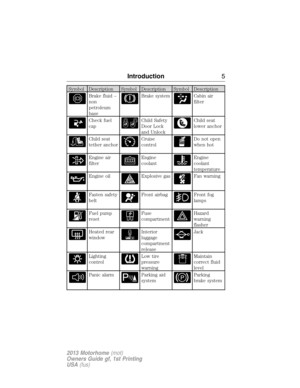 6
6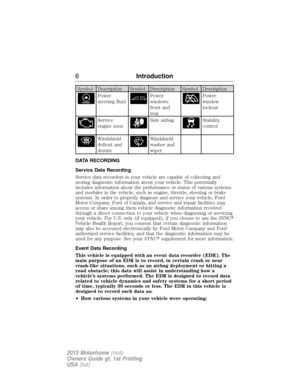 7
7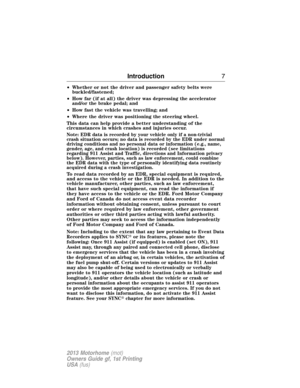 8
8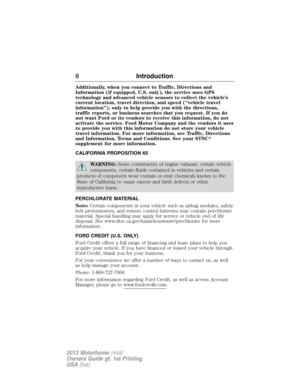 9
9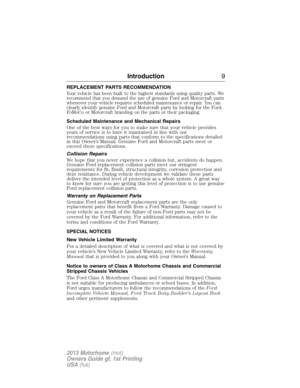 10
10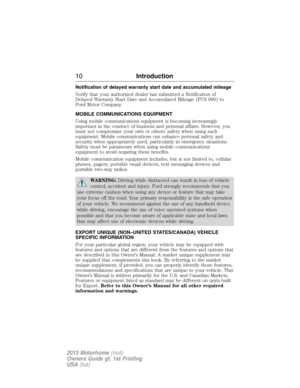 11
11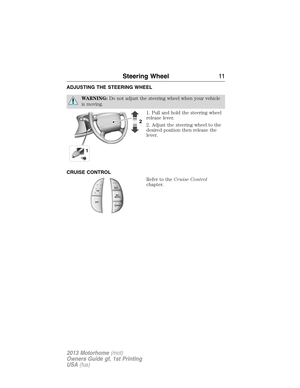 12
12 13
13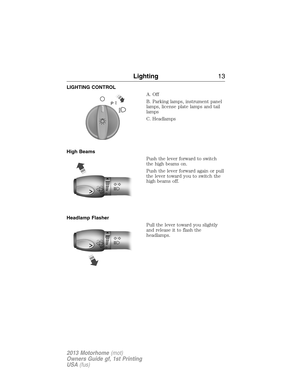 14
14 15
15 16
16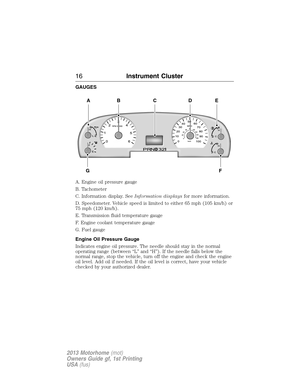 17
17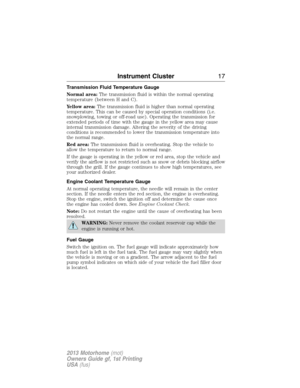 18
18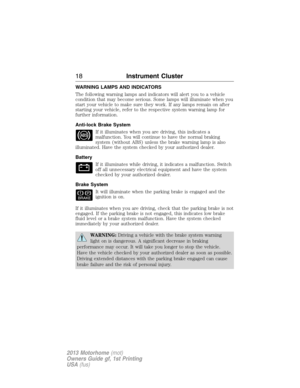 19
19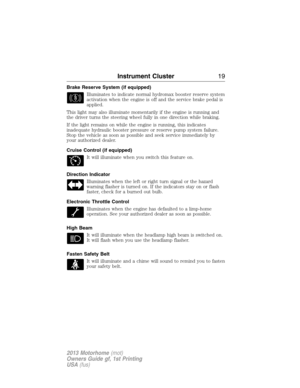 20
20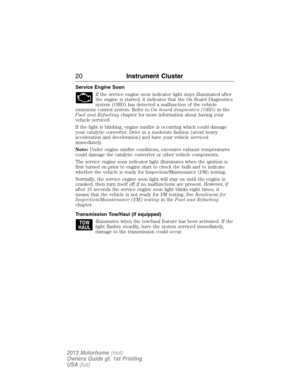 21
21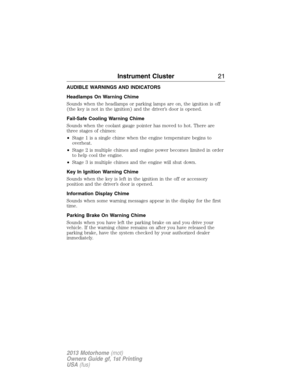 22
22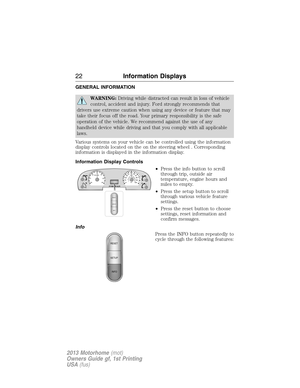 23
23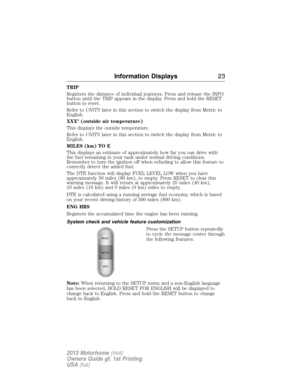 24
24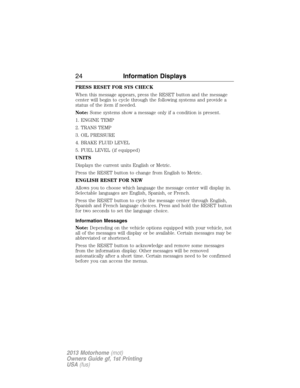 25
25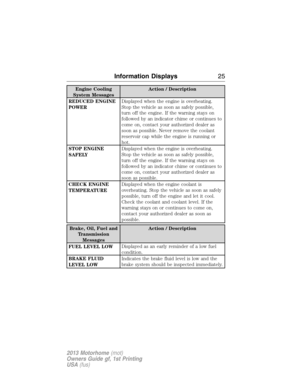 26
26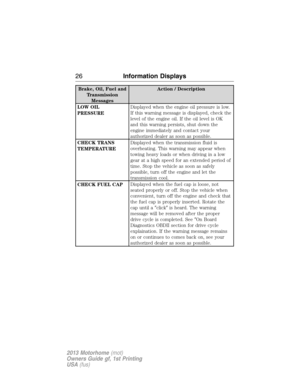 27
27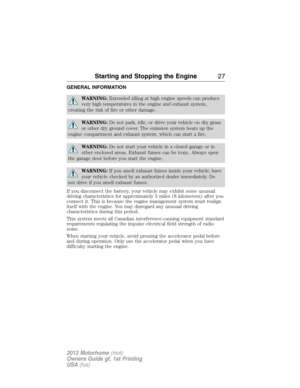 28
28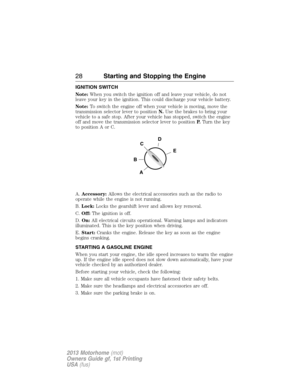 29
29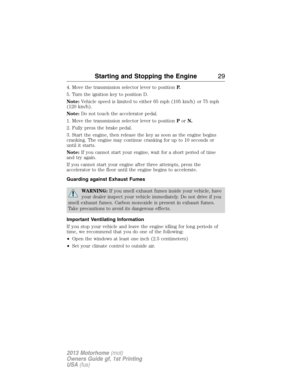 30
30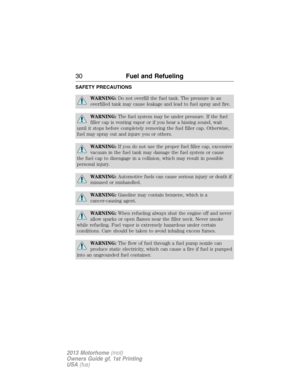 31
31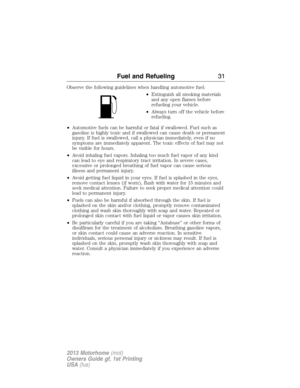 32
32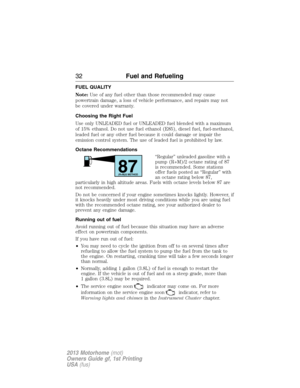 33
33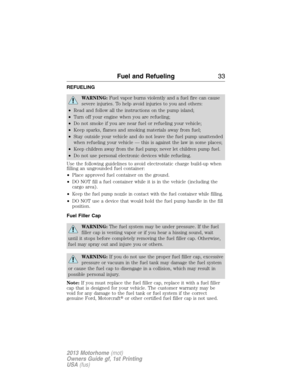 34
34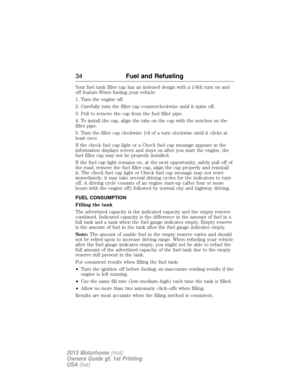 35
35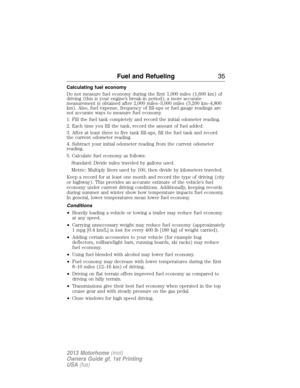 36
36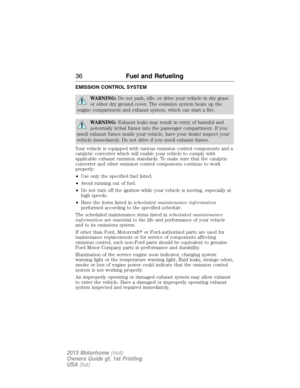 37
37 38
38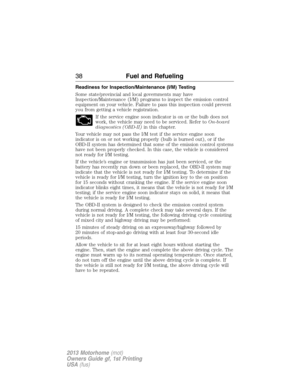 39
39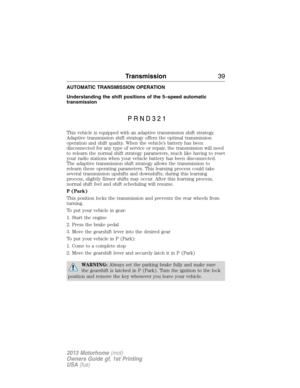 40
40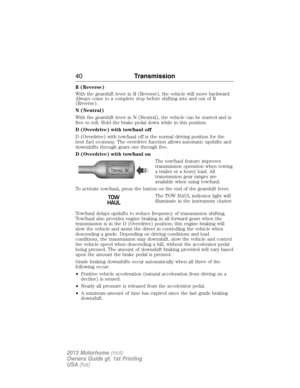 41
41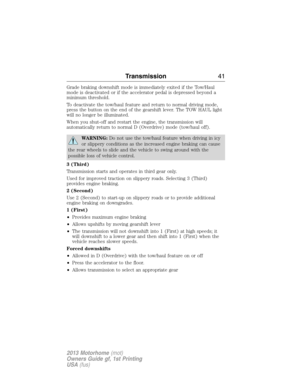 42
42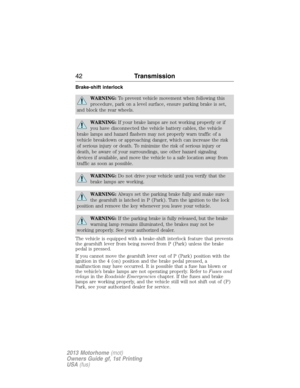 43
43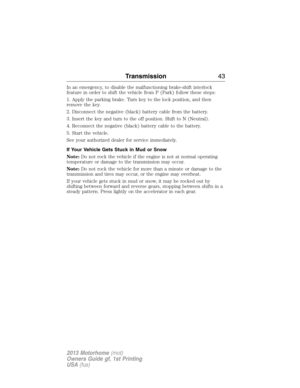 44
44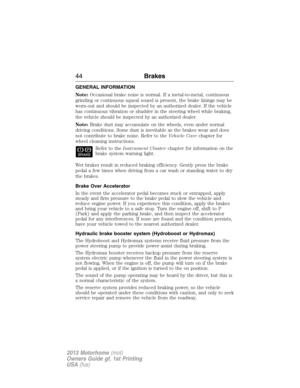 45
45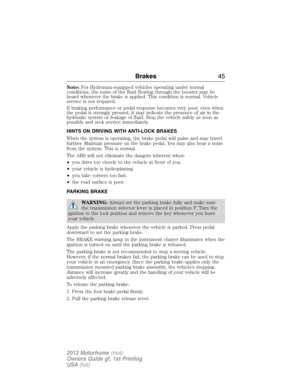 46
46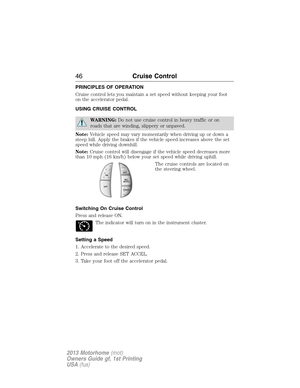 47
47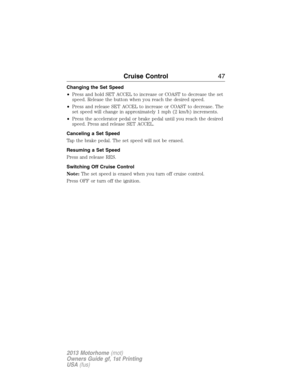 48
48 49
49 50
50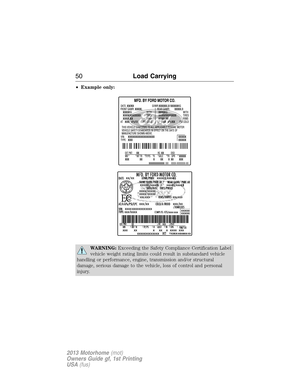 51
51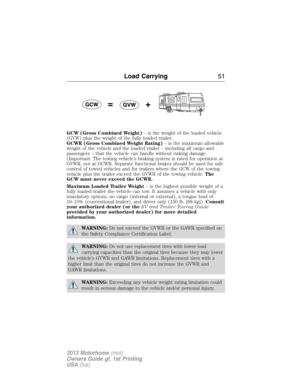 52
52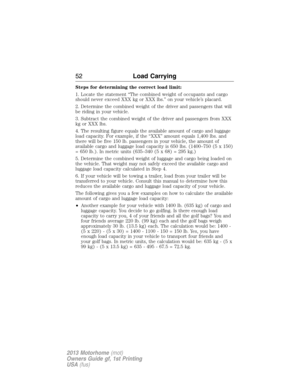 53
53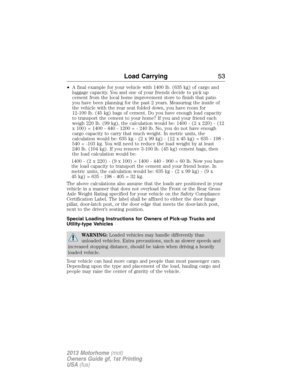 54
54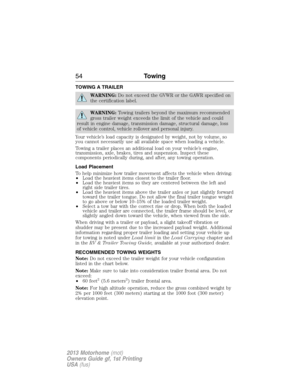 55
55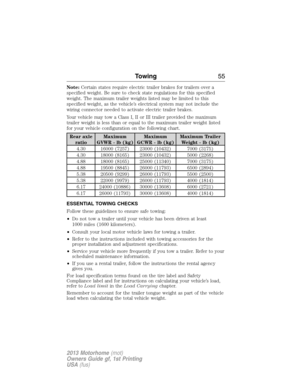 56
56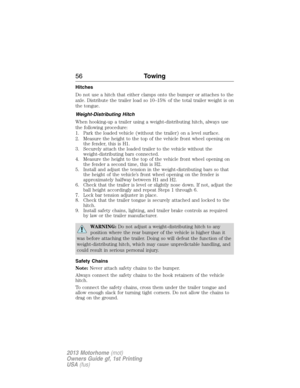 57
57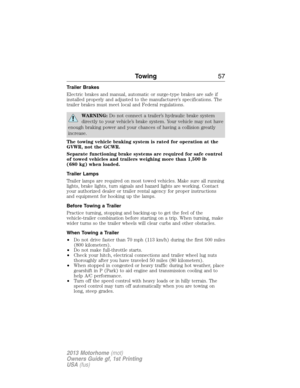 58
58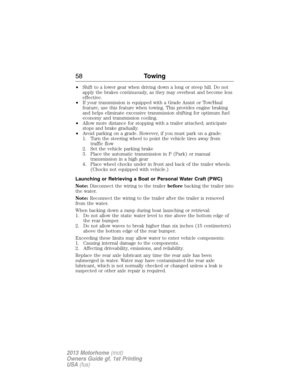 59
59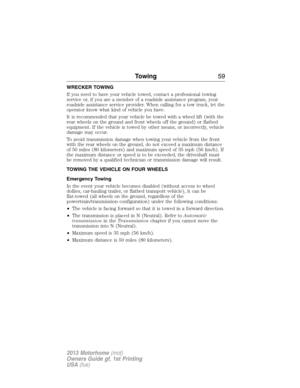 60
60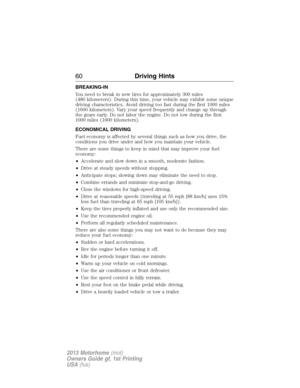 61
61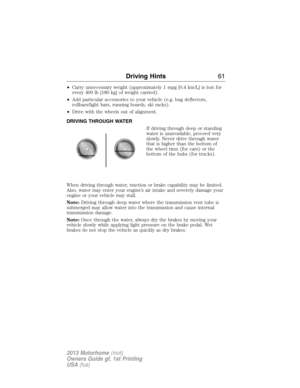 62
62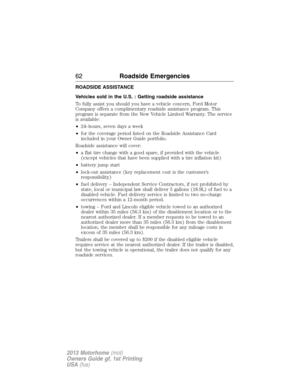 63
63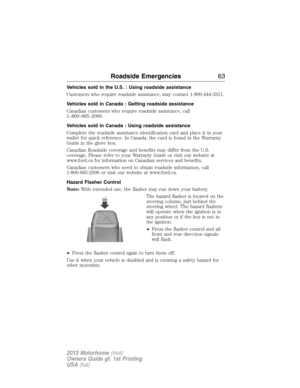 64
64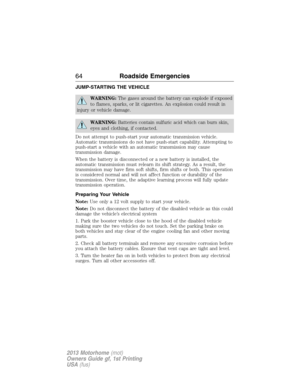 65
65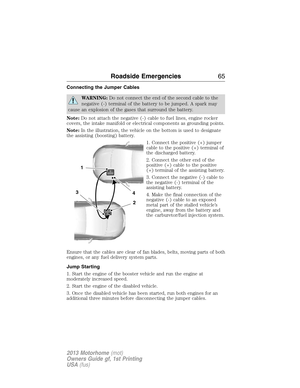 66
66 67
67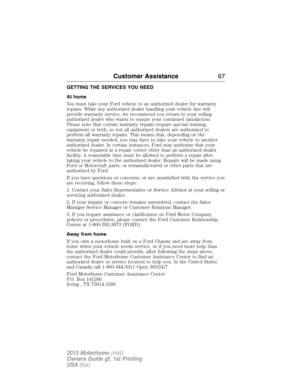 68
68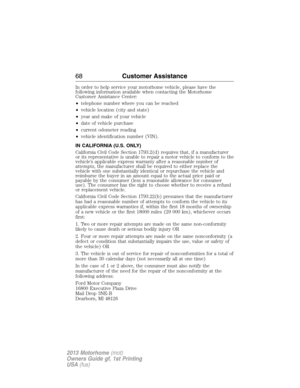 69
69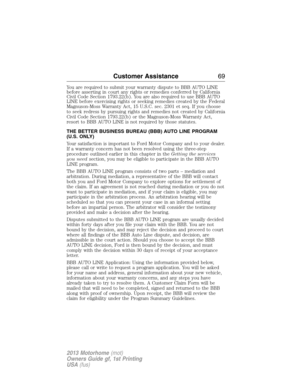 70
70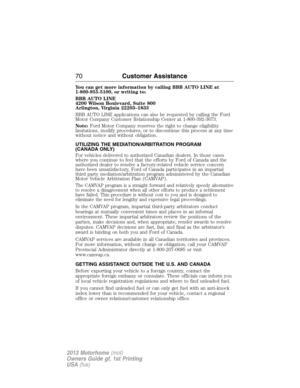 71
71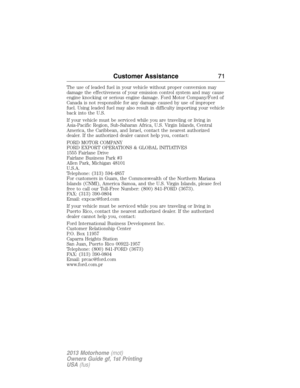 72
72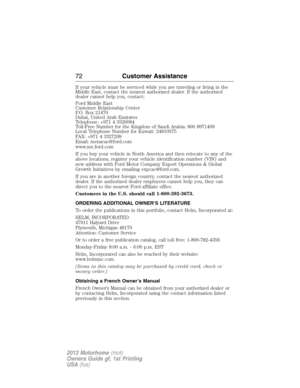 73
73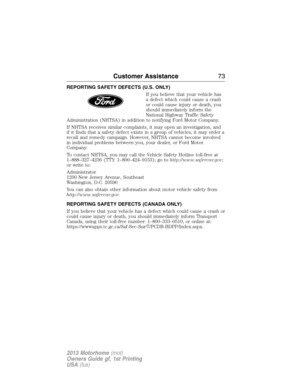 74
74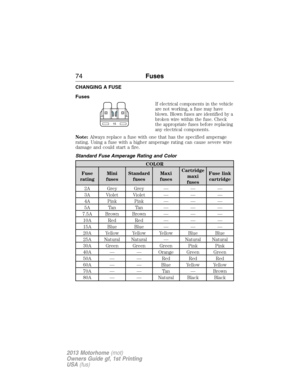 75
75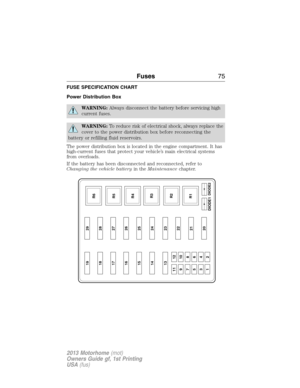 76
76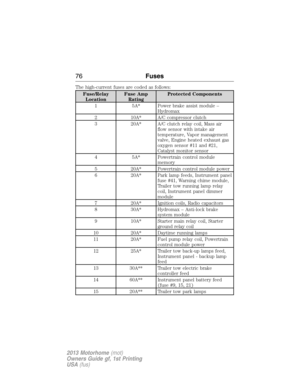 77
77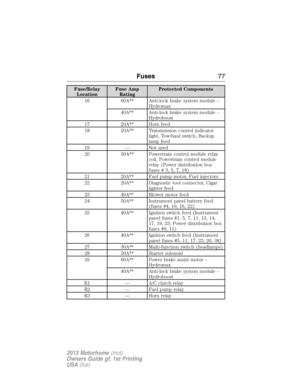 78
78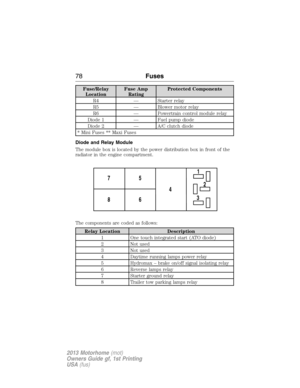 79
79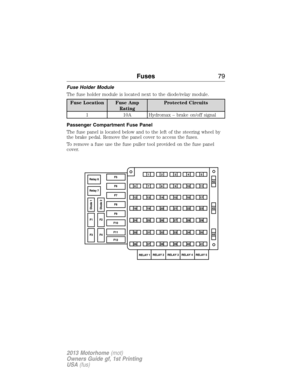 80
80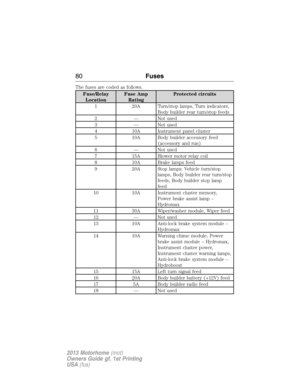 81
81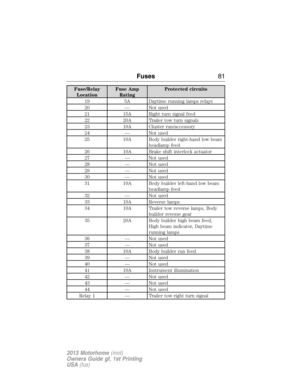 82
82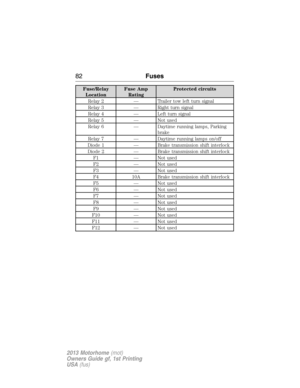 83
83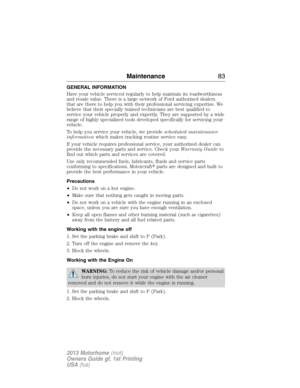 84
84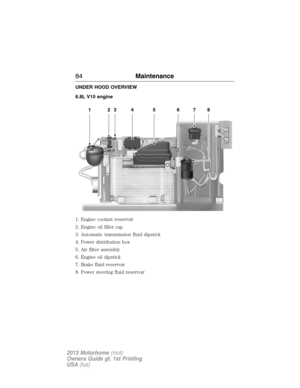 85
85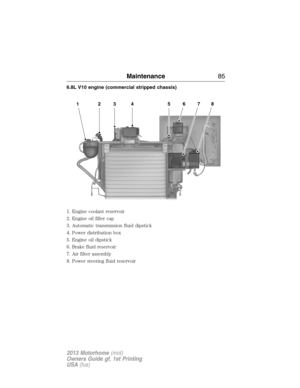 86
86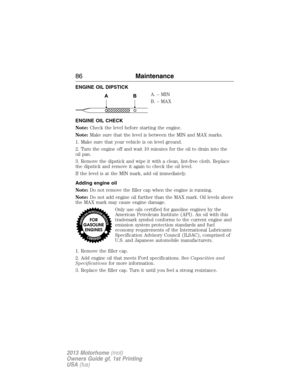 87
87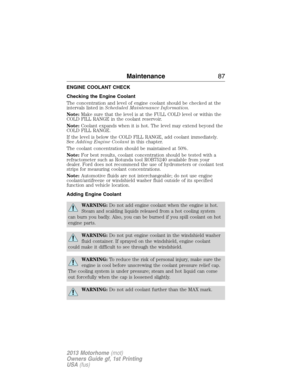 88
88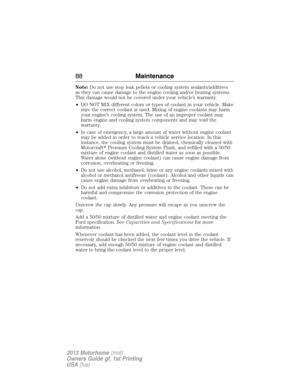 89
89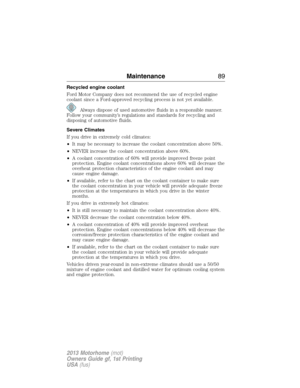 90
90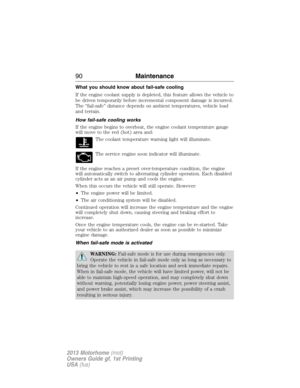 91
91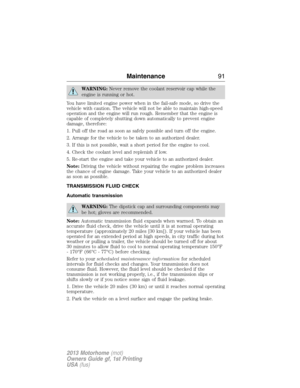 92
92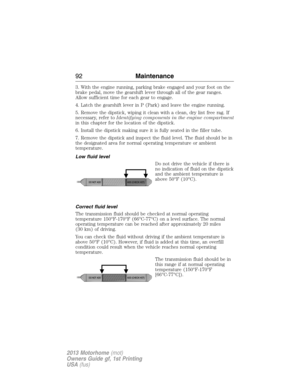 93
93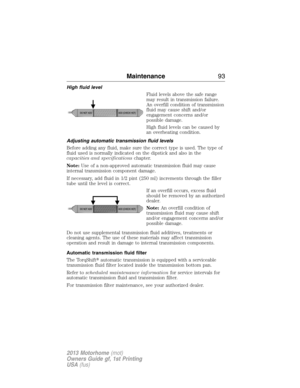 94
94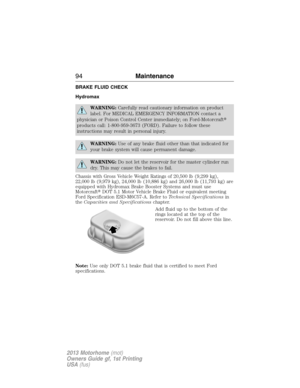 95
95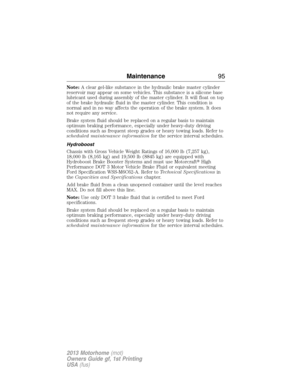 96
96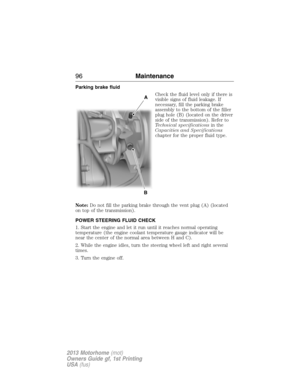 97
97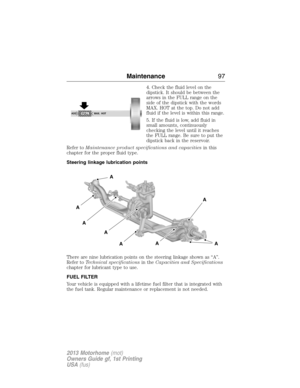 98
98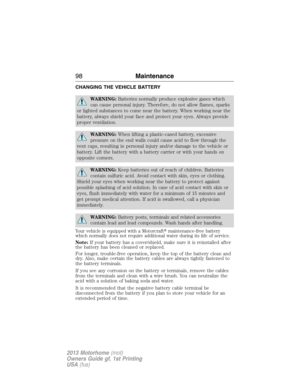 99
99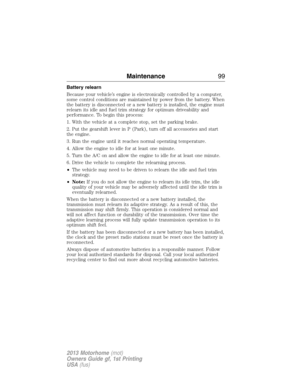 100
100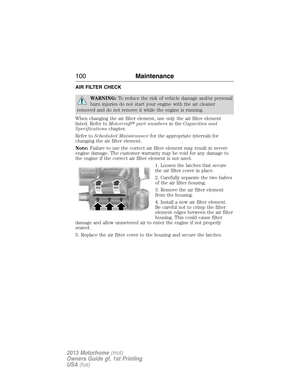 101
101 102
102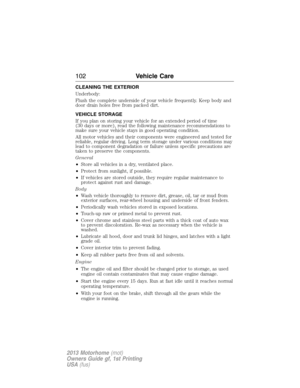 103
103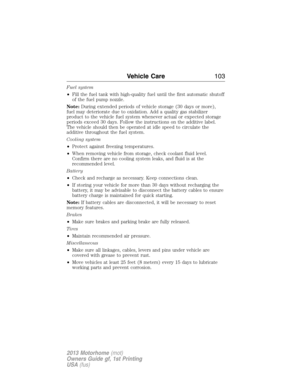 104
104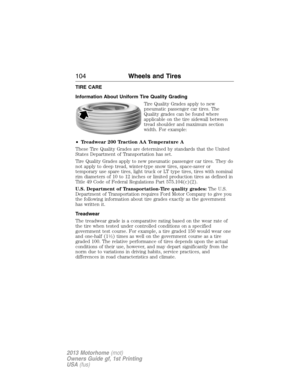 105
105 106
106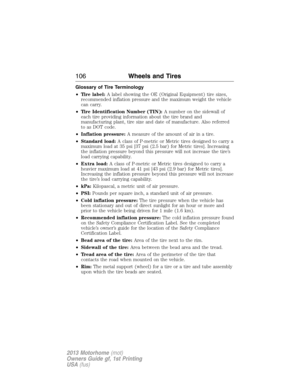 107
107 108
108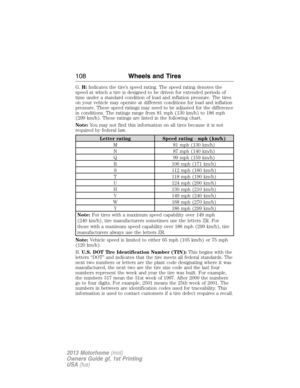 109
109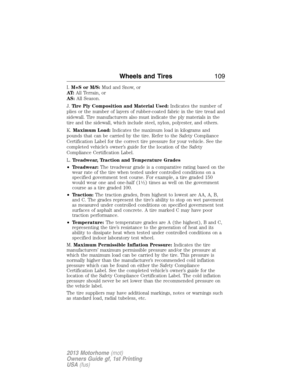 110
110 111
111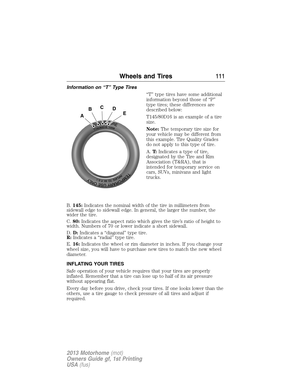 112
112 113
113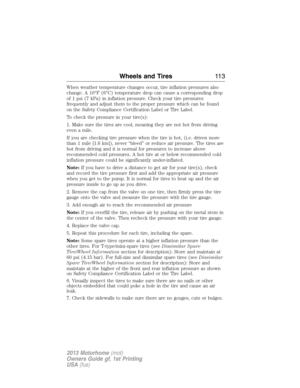 114
114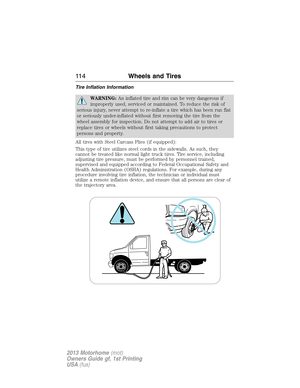 115
115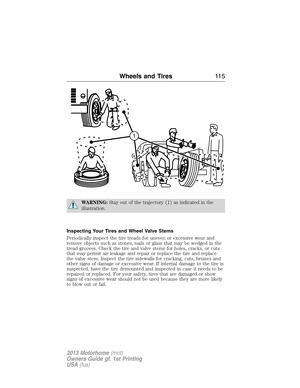 116
116 117
117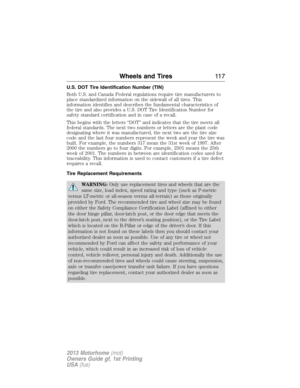 118
118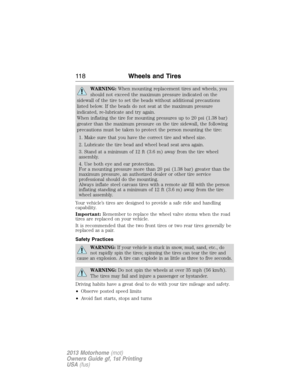 119
119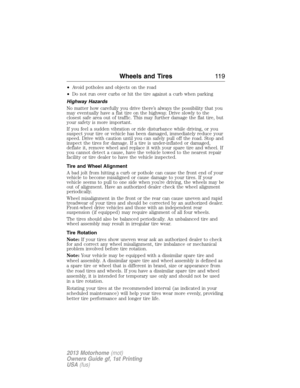 120
120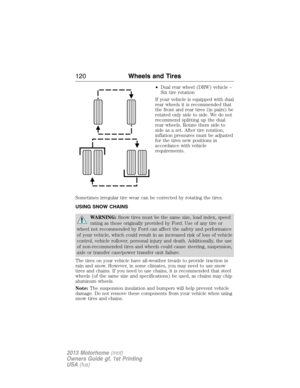 121
121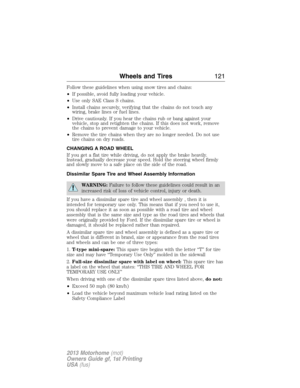 122
122 123
123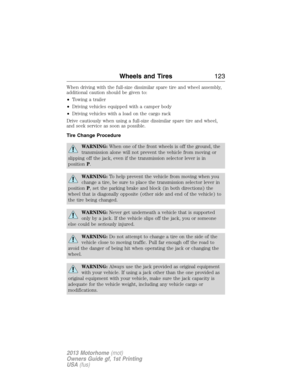 124
124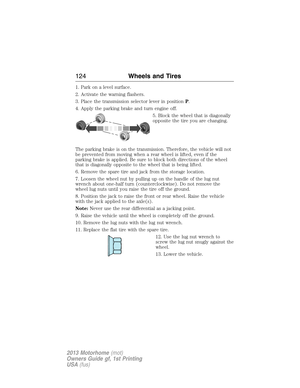 125
125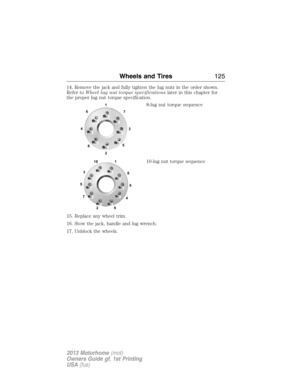 126
126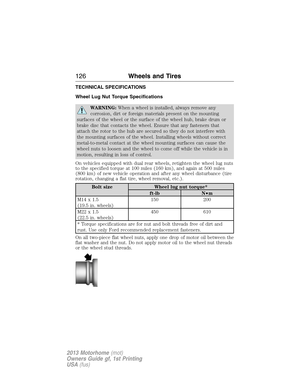 127
127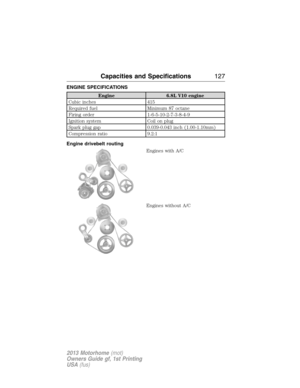 128
128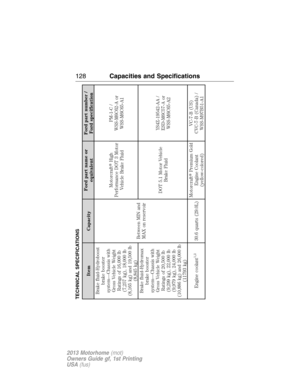 129
129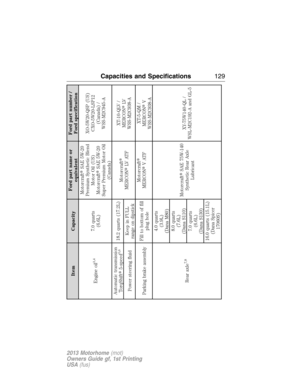 130
130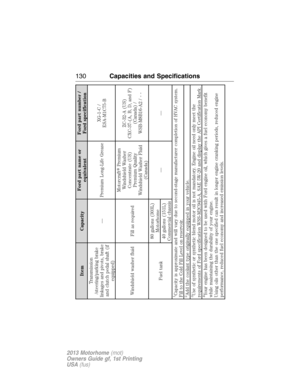 131
131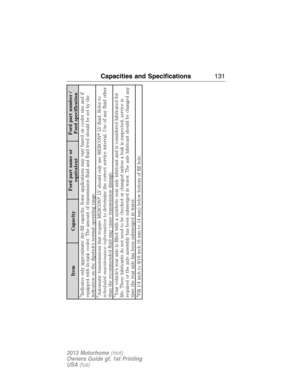 132
132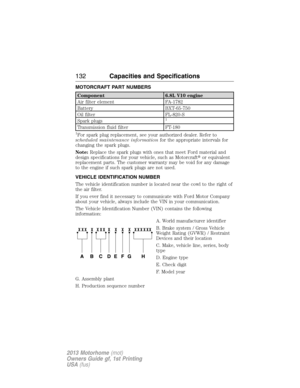 133
133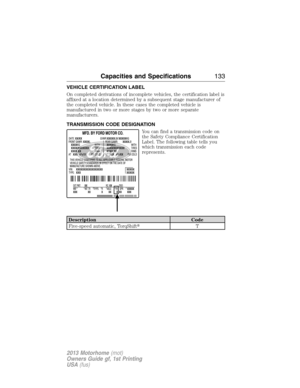 134
134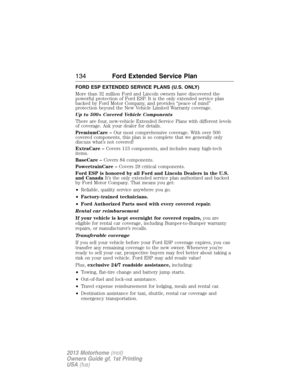 135
135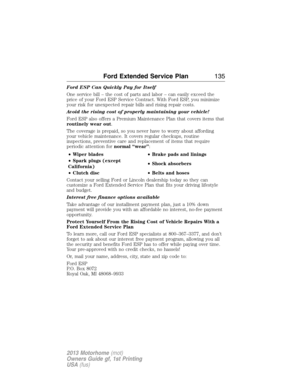 136
136 137
137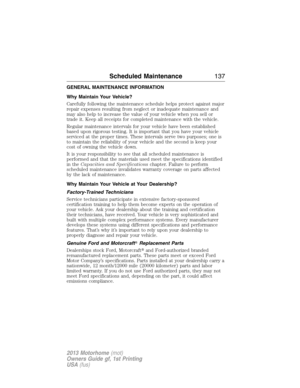 138
138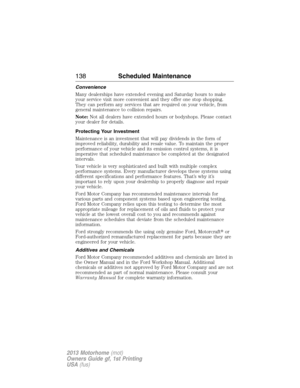 139
139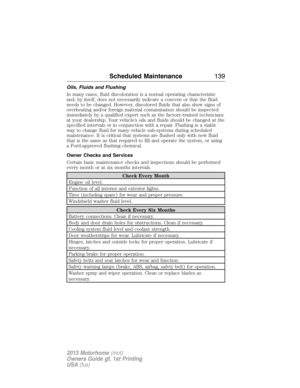 140
140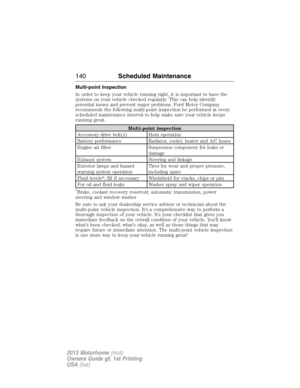 141
141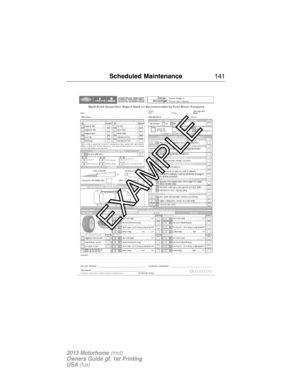 142
142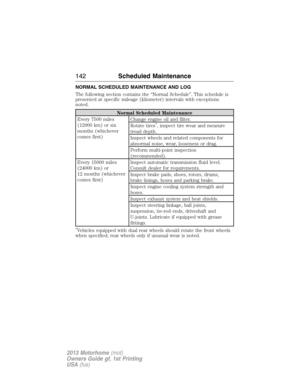 143
143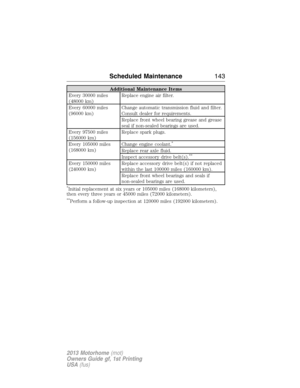 144
144 145
145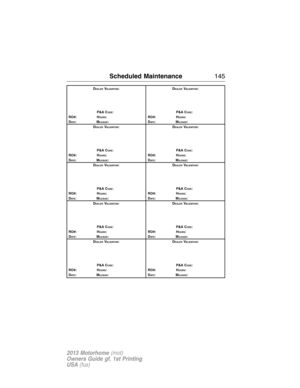 146
146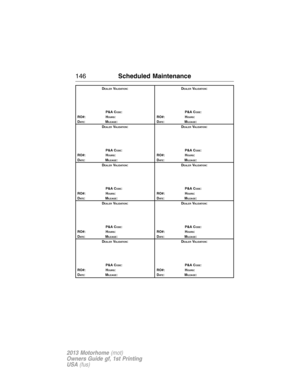 147
147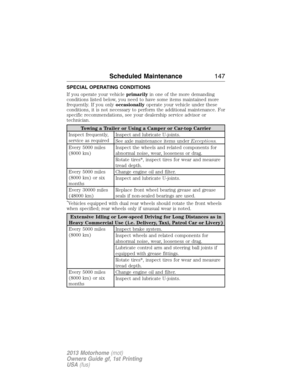 148
148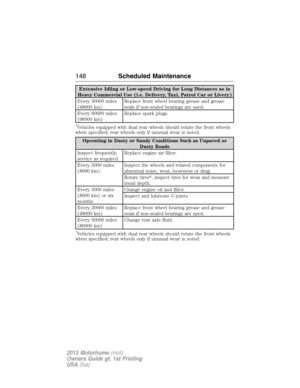 149
149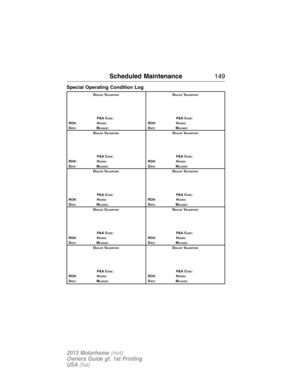 150
150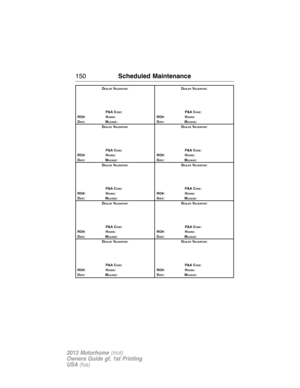 151
151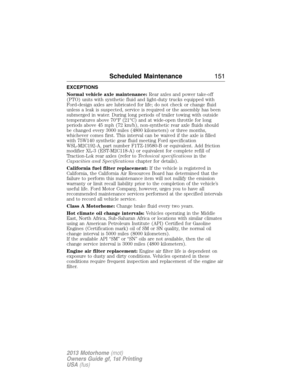 152
152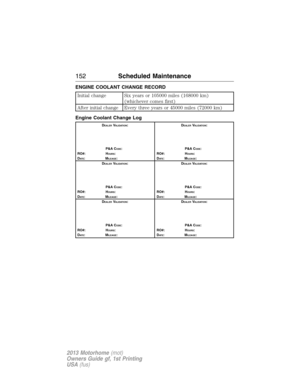 153
153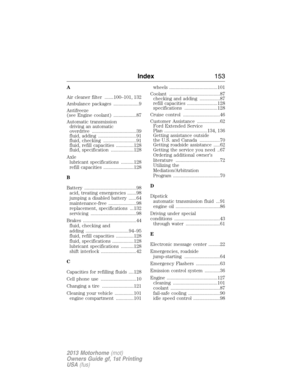 154
154 155
155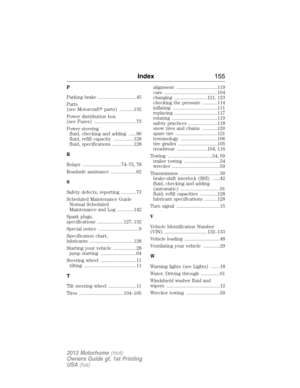 156
156






